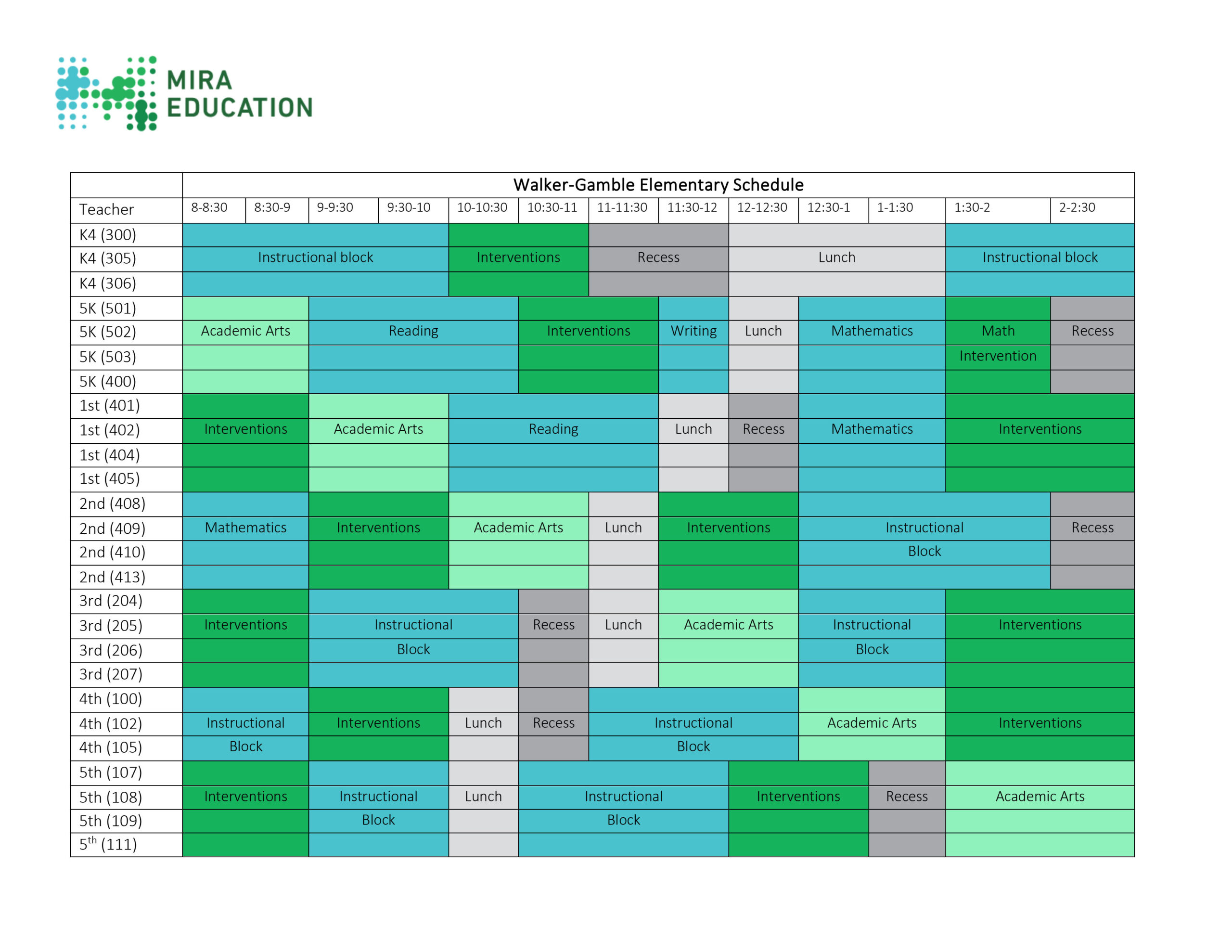Time / Analyze
How Time is Currently Used

How Time is Currently Used
“School and system leaders should start by assessing how teachers currently spend their time. This can reveal how much time teachers actually spend doing things that may not support their core work of instruction, such as duties or generic PD activities. This also creates a baseline for making a case for change and measuring progress. Armed with data on current use of time, leaders can get to work creating schedules that maximize effective collaboration and support professional learning” (Rosenberg et al., 2018).
Schools and classrooms are dynamic places where even the best laid plans are frequently interrupted by emerging needs of students. That is the nature of working with young learners and part of what can make aligning intention with reality so challenging when it comes to how teachers’ time is spent.
This section focuses on tracking how teachers’ time is currently used within your school or district. Rather than rolling out another assignment, your team should thoughtfully consider how to strategically engage teachers in this process. Actively including teachers in the design and implementation of the plan is an effective strategy for creating co-ownership of the effort, thus avoiding the need to seek “buy-in.” (See SC TEACHER district and school toolkits for additional resources.) While it may not be the team’s intent, a time tracking process could be perceived as a way to monitor or micro-manage teachers’ time. It is important that teachers who engage in this process understand that this is an effort to capture and analyze data so that working conditions can be improved.
As your team considers use of the time tracker to analyze how teachers’ time is currently used, discuss who and how many teachers will be involved in the time tracking effort. While teachers complete the time tracker individually, analysis of the data from multiple teachers and across roles can provide significant insights into how much the use of teachers’ time aligns with your school or district priorities. Discuss the questions and capture the team’s responses on Worksheet 5. Your team will use your responses later in this toolkit to develop an action plan.
Worksheet 5: Analyzing Time Considerations
"*" indicates required fields
*You can only download a completed PDF once all required fields have been completed
The following exercises utilize Mira Education’s Educator Time Tracker tool. The tool is structured so that teachers can track, analyze, and reflect on how their time is spent over a period of three days. Once that process is completed, the information gathered can be analyzed and the results used to identify opportunities to increase efficiency and/or effectiveness in how teachers’ time is spent.
Click the image above to download or visit: toolkit.sc-teacher.org/references.
Protocol (Individual Teachers)
- Teachers should capture the following information prior to completing their time trackers:
- Describe the intended flow of most days in your classroom, including the daily schedule
for the class(es). - Identify all of the different priorities and responsibilities you are expected to handle.
- How do you typically organize your time in order to meet the multiple demands
of your responsibilities?
- Describe the intended flow of most days in your classroom, including the daily schedule
- Before using the time tracker, identify the main categories/headers for each of the columns on the tracker. These categories/headers should reflect the different types of work in which you engage on a daily basis. The categories will vary by grade level, content, and other contextual considerations.
- In 15-minute intervals, capture the category of each activity in which you engage throughout the day.
- Complete the time tracker for three “typical” days within a two-week period of time.
- After completing the time tracker, add the total number of minutes spent in each category for each day.
- Respond to the following questions, which are on the last page of the time tracker tool:
- As you review your data, describe what the information reveals about the distribution of your time.
- How does that compare to how you perceived your time was being spent? (Address any surprises, barriers, or challenges.)
- What are the implications for your ability to attend to core goals and responsibilities you are expected to address each day?
- What is the most important core priority that is NOT being attended to as a result of how your time
is being spent?
Protocol (Teacher Teams)
- All teachers on the team use the protocol above.
- Once all of the teachers on the team have completed their time trackers and completed the reflection questions, create groups of three.
- In small groups, each teacher shares what they learned about how their time was spent as compared to how they perceived it was being spent. Commonalities are captured on a chart paper or in a shared document.
- In the whole group, small groups share the information they gathered.
- Everyone listens for commonalities among the groups and the team captures common themes across all groups.
- The group engages in a dot voting exercise to identify the top priority to address.
- Capture this priority. We will return to it in the Select portion of this toolkit.
A South Carolina Example
Walker Gamble Elementary School in Clarendon County engaged in this process using the Educator Time Tracker tool. Several teachers, administrators, and their superintendent participated. The information garnered from the process resulted in their school completely revising their master schedule so that all students had additional support and all teachers had more collaborative planning time. To learn more, see the Walker-Gamble case study (https://miraeducation.org/leading-improvement-together-walker-gamble-elementary-and-the-sc-collective-leadership-initiative/).

Walker Gamble’s Master Schedule After Analyzing Time
Micro-Credential Connection
These time tracking processes and protocols align with the Analyzing Time micro-credentials in the mCrED catalog. Connect with CarolinaCrED at carolinacred.org for more information on how to access and earn these micro-credentials.